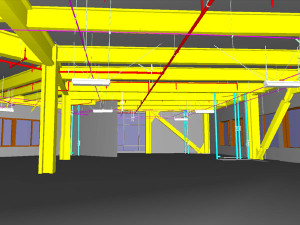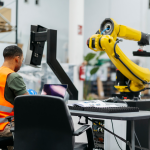 There have been interesting and mind-blowing innovations in the science world over the years, but few might have the “hurricane” impact as 3D printing when it becomes the main scale. The internet rush of the late 20th century and the early 21st century resulted in many of the fascinating things we now enjoy including Blockchain tech, Data Analytics, Virtual meetings, and co. And yet many believe 3D printing will be bigger, especially for Civil Engineering; how inspiring!
There have been interesting and mind-blowing innovations in the science world over the years, but few might have the “hurricane” impact as 3D printing when it becomes the main scale. The internet rush of the late 20th century and the early 21st century resulted in many of the fascinating things we now enjoy including Blockchain tech, Data Analytics, Virtual meetings, and co. And yet many believe 3D printing will be bigger, especially for Civil Engineering; how inspiring!
While Additive manufacturing will become useful to every sector of our world, including medicine, art, prototyping, VR, and co, there is no better way people would see it implemented fully than in Civil Engineering.
Civil/Structural Engineering is one crucial sector that has touched and continues to impact many lives. It cuts across all phases of our daily living, from building construction to bridges, dams, roads, towers, storage centers, and other utilities in the city or community. It also has the task of maintaining and improving such facilities. Many consider it the oldest and most crucial branch of engineering, and one can only imagine the many possibilities of 3D printing and Civil Engineering.
Applications of 3D printing in Civil Engineering
The most valuable feature of 3D printing is its ability to create the most complex geometric shapes easily. And create the additive layers to form the structure. With this kind of “anything is possible” feature and the speed by which it makes them, it will advance the course of Civil Engineering.
- Improvements in modes of Bridge construction
Nobody expected it when the first concrete bicycle bridge opened up to users in 2017 in The Netherlands or when Shanghai, China printed the longest 3D bridge (26 meters in 450 hours). These bridges were an important milestone in a battle that was turning to be one of feasibility. It is showing the world that Additive manufacturing can unlock higher levels of human development, including; emergency bridges constructed in seconds, quick response to disasters, and many more.
- Improving roads and maintenance techniques
Transportation by road is still the most important and popular mode of transport today. Civil Engineers continue to research and employ different methods and techniques in improving the standards of roads, bridges, and other structures.
While working on roads, the heavy materials and methods used often lead to serious congestions and discomfort. However, improvements are being made to use tar, asphalt, and others in 3D printing.
- Improving tools for analysis and sensor
To improve roads, bridges, and other construction designs, Civil Engineers often depend on fiber-optic sensors. While these sensors are important to the Engineer, they are also costly to install in the structures and often not compatible with the construction materials used.
However, advancement in 3D printing has developed a simple 3D printed packaging for sensors. These packagings are not only suitable for almost all construction materials but are simple to mount.
When these sensors and devices are fully developed and released, it will help Civil Engineers make a proper and accurate analysis of the structures.
- Reduce waste and cost in construction
Each year billions of dollars are lost due to waste from construction worldwide, one of the many downsides to the traditional manufacturing process. And some of these wastes are the major constituents of the biological degradation of the earth.
Additive manufacturing produces nearly zero wastes throughout the process of construction. Besides, it creates even more complex shapes than any of the manufacturing processes listed above. Most of the machines, buildings, and other constructions made with 3D printing are achieved with far lesser costs each time. And the continuous advancement in the field will continue to drive down these prices.
- Achieving more Complex Shapes in designs and constructions
One can only imagine how many designs have been abandoned in the past for being too complex or costly to manufacture. However, complexities in shapes are one of the most interesting features of 3D printers. It allows for more innovation, flexibility, adjustments in designs, and above all, makes it more cost-effective. It comes out as a perfect photocopy of what you see in the drawings, only this time; it becomes tangible.
- Complete construction in fewer periods
Although improvements in some of the techs/methods used by Civil Engineers have greatly reduced construction periods, it is still a bit slow for the growth we aim to achieve.
Through 3D printing, medical supply grounds, houses, and other temporal utilities are being constructed. With 3D printing, it has become very possible to design more complex and difficult parts in fewer periods.
Wrapping Up
Among the many techs emerging to reshape our world, 3D printing is leading that charge. And many industries have not looked away from it. The sort of attention 3D printing is getting, including research, funding, investments, and patience, will make it the next “big thing” like the internet.
It would mean; Telecoms mast being assembled and mounted in minutes, massive improvements to the housing system, construction of durable roads, and more aesthetic malls and landmark buildings.
For the Civil Engineer, the only limitations to 3D printing are their imagination.
Contact us today with any questions you may have. We look forward to hearing from you!








